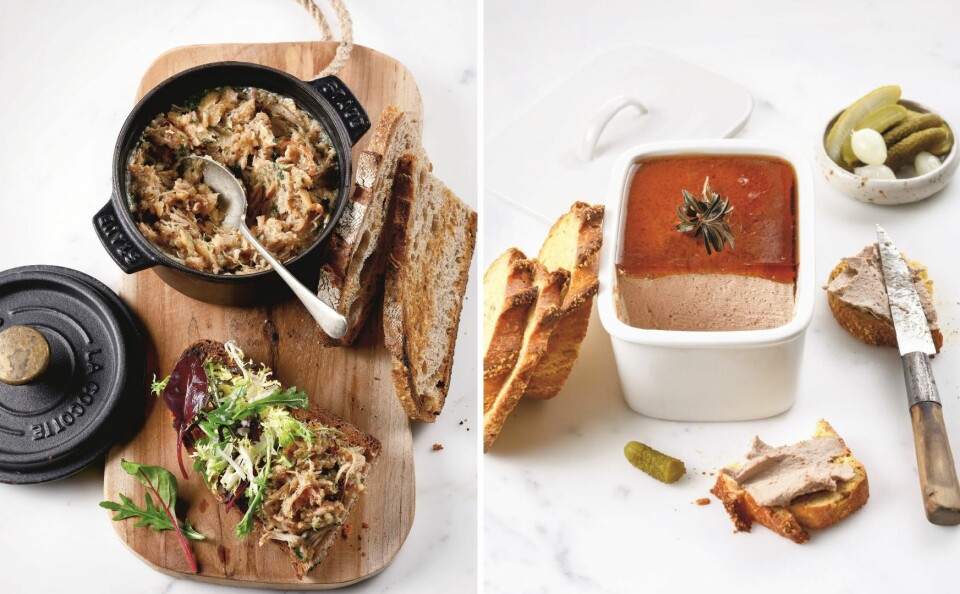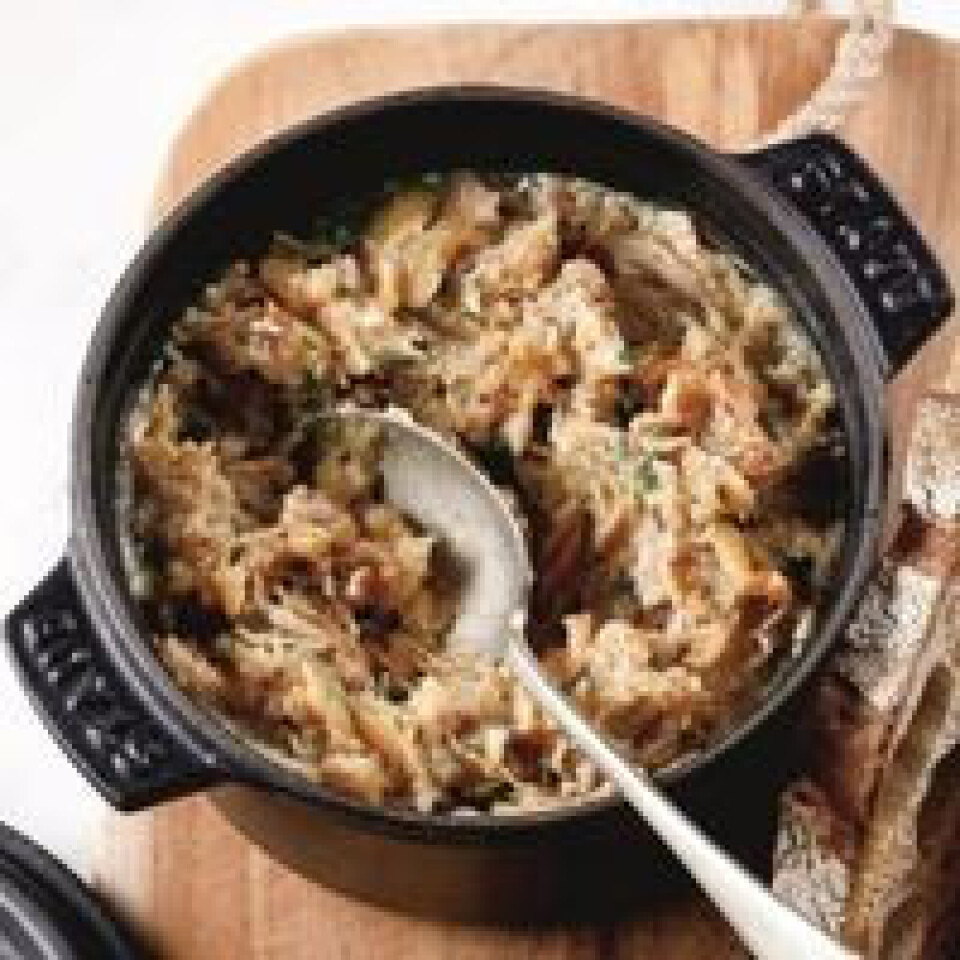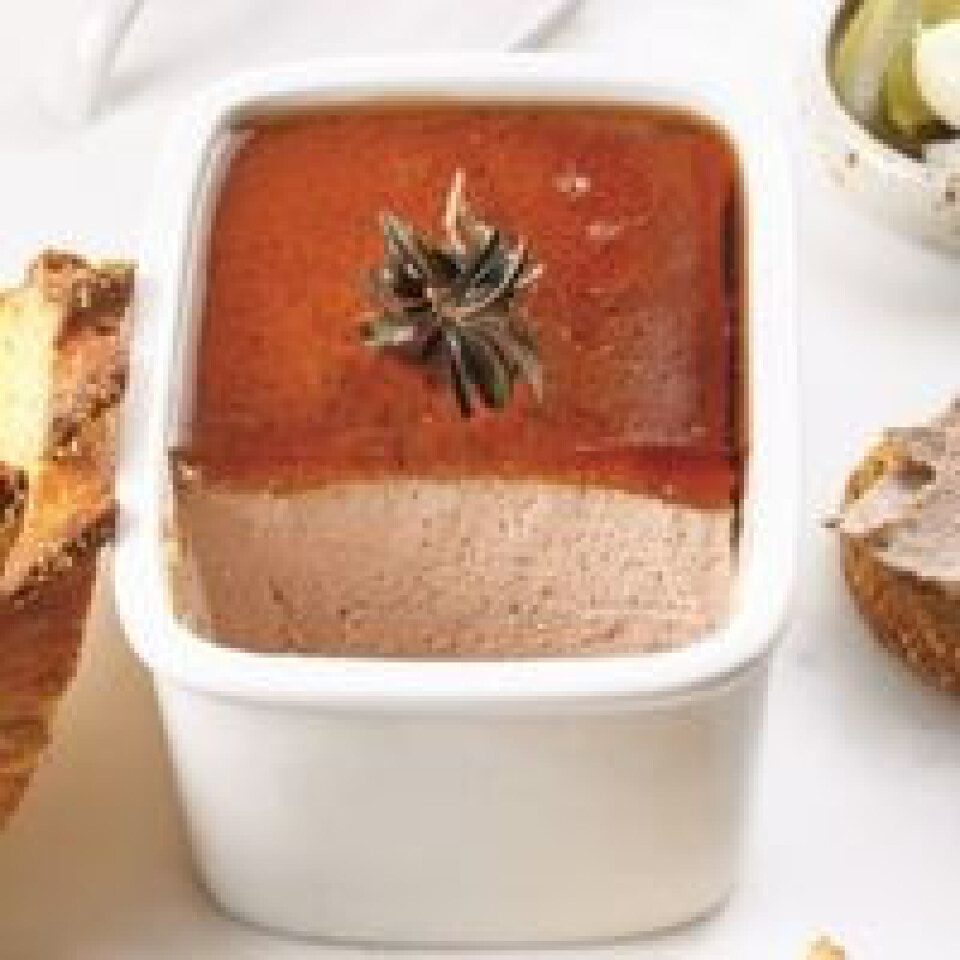-
The magic of mayonnaise: Why a homemade emulsion always woos guests in France
Plus, which shop-bought mayo brand is best?
-
Online ‘anti-waste’ supermarket offers deals on everyday items in France - we test it
Discounts of 10% to 50% available on brand products
-
Travellers to the UK from France cannot bring in meat and dairy items amid disease fears
Britons bringing gifts of saucissons and cheese to family among those impacted by restrictions
RECIPES: real French charcuterie of rabbit rillettes, pork liver pâté
We look at the history and techniques of pâtés, terrines, sausages and ‘farcis’ (stuffed dishes)

A new cookbook takes a loving look at France's long tradition of charcuterie, examining the various styles and presenting step-by-step guides to making them at home
Pâtés, terrines, sausages, rillettes, and farcis (stuffed dishes) are all part of the big charcuterie family.
In their sumptuous new book, Charcuterie: Pâtés, Terrines, Savory Pies Recipes and Techniques From the Ferrandi School of Culinary Arts, the chefs share their secrets for successfully making both classic and updated versions of these iconic French preparations.
France has over four hundred charcuterie specialties – nearly as many as there are cheeses or wines. Some are even centuries old.
While the book does not include certain preparations intended for professionals (such as andouillettes and cured meats), it contains many others that are suitable for preparation in home kitchens. Here are the main categories features.
Read more: French food notes: The salty tale behind Jambon de Bayonne
Pies, tarts, and pâtés en croûte
Pâté literally means ‘cooked in a pastry crust’ (pâte).
The original pâtés were always ‘en croûte’, akin to the English pie, and were served either hot or cold.
Over time, the word evolved to designate the contents of the pie, without the crust.
This chapter includes preparations that reflect the original meaning of the term: pâté en croûte, savoury pies and tarts, pithiviers, coulibiac, and sausage in brioche. These are sometimes categorised as ‘charcuteries pâtissières’ (i.e charcuterie-filled pastries).
Pâtés and terrines
The word ‘terrine’ denotes a preparation that has been cooked and chilled in a recipient of the same name, typically ceramic or porcelain – two materials that conduct heat well.
Terrines come in countless varieties: they may be made with meat (pork, veal, poultry, or game), fish, or vegetables, and the texture can vary.
Today, the terms terrine and pâté are often used interchangeably for preparations that were once baked in a pastry crust but are now cooked in a terrine mould.
Pâtés en terrine may be smooth (such as liver pâté) or rustic (like country pâté), with larger pieces of meat.
Terrines can also be pressed and weighted to make them more compact, known as pressés in French.
The most famous pressés include Burgundy’s jambon persillé (ham and parsley terrine) and fromage de tête (brawn or head cheese).
Placing a weight on top releases the juices, which set when chilled, resulting in a firm texture suitable for slicing.
Rillettes and pulled meats and fish
Rillettes are traditionally made with meat – usually pork, veal, or poultry – cooked slowly in duck or goose fat or lard over many hours, until fall-apart tender.
The meat is then shredded, mixed with the cooking fat, and stored in a mould.
Rillettes have been appreciated in France for their tender, melt-in-the-mouth texture since at least the mid-eighteenth century.
This preservation technique has evolved to incorporate fish and/or vegetables, using less fat and transforming the ingredients into delicious spreads, often called effilochés in French.
Stuffed dishes
The broad category of charcuterie also encompasses many stuffed dishes, known as farcis in French – from the verb farcir (to stuff). The charcutier’s typical stuffing – farce – is made with ground meat, fish, or vegetables blended with seasonings and sometimes a binding agent (usually bread, egg, or a starch) and other flavourings.
Highly versatile, farce is one of the foundations of charcuterie.
In the ‘Stuffed Dishes’ chapter, it is used to stuff poultry; pieces of meat (in the case of paupiettes and ballotines, for instance); seafood (such as stuffed squid); vegetables (like zucchini); or even less popular cuts (including duck necks).
Read more: French language: how ‘stuffing’ is used in the kitchen and theatre
Cooked charcuterie
Finally, charcuterie plays a starring role in many other recipes, which also take advantage of all the cuts of pork, veal, or beef – including cheeks, ears, tongues, or feet, depending on the animal.
These charcuterie-based recipes not only reduce waste, but are also delicious.
Selecting the meats
Among the 350 breeds of pig classified worldwide, about ten are produced in France, and most of this production (70%) goes to the French charcuterie industry.
Classic breeds such as Large White, Landrace, and Duroc are particularly prized for their yield.
On a smaller scale, artisan charcutiers continue to make unique regional charcuterie specialties with local heritage breeds, including West French White, Bayeux, Noir de Bigorre (also known as Gascon), Cul Noir Limousin, Kintoa (Basque black-pied pigs), and Nustrale from Corsica.
The way in which animals are raised significantly influences the quality of their meat.
Pasture-raised pigs have healthier, more flavourful fat, which impacts the overall taste of the meat, so purchase pastured pork products whenever you can.
For rabbits, poultry, and game, try to find artisan producers. In all cases – whether using meat, fish, or vegetables – be sure to use products at their prime.
Read more: Charcuterie professionals hail new proposed law cutting nitrite-levels
Rabbit Rillettes (Rillettes de lapin)

Photo:Rina Nurra
Serves 10
Active time: 2 hours
Cooking time: 1½ hours
Chilling time: 24–36 hours
Storage: 8 days in the refrigerator
Equipment
Fine-mesh sieve
Terrine mould in the size and capacity of your choice,
or small cast-iron Dutch oven
Ingredients
1 carrot
1 onion
150g smoked bacon
70ml olive oil
4kg rabbit, preferably Rex du Poitou, skinned and cut into 8 pieces
50g wholegrain mustard
350ml Sauvignon Blanc
1 litre white chicken stock (fond blanc de volaille)
½ calf’s foot
2 sprigs thyme
1 bay leaf
2 tbsp finely chopped parsley
2 tbsp finely chopped chervil
1 tbsp finely chopped tarragon
Salt and freshly ground pepper
To serve
10 slices toasted country bread
2 oz. (50 g) lightly dressed mesclun greens
Method
1. Preheat the oven to 340°F (170°C). Peel and quarter the carrot. Peel and finely chop the onion. Cut the bacon into lardons. Warm the olive oil in a Dutch oven over high heat and, when hot, brown the rabbit pieces all over. Add the carrot, onion, and lardons, reduce the heat, and cook until the vegetables are softened. Add the mustard and cook until lightly browned. Deglaze with the wine and reduce by a third. Add enough chicken stock to just cover the meats and vegetables and bring to a boil. Add the calf’s foot, thyme, and bay leaf. Cover and cook in the oven for 1½ hours.
2. Carefully transfer the rabbit pieces to a plate and discard the aromatics and calf’s foot. Strain the pan juices through the fine-mesh sieve into a bowl and skim the fat off the surface. Taste, reduce the juices further if necessary, and season with salt and pepper as needed. Remove the rabbit meat from the bones, then shred it twice making sure all of the small bones have been removed. Place in a bowl and stir in the parsley, chervil, and tarragon until well mixed.
3. Taste and adjust the seasoning if needed. Spoon the rillettes into the terrine and cover with the pan juices.Cover and let set in the refrigerator for 24–36 hours.
To serve
Serve on toasted country bread, topped with lightly dressed mesclun greens.
Chef’s Note
To remove the fat more easily, chill the sauce so that the fat solidifies on the surface, then scoop it off using a spoon.
Pork liver pâté (Pâté de foie)
Photo:Rina Nurra

Serves 12
Active time: 1 hour
Marinating time: 24 hours
Infusing time: 20 minutes
Cooking time: 2¼ hours
Chilling time: 2 hours
Storage: 10 days in the refrigerator
Equipment
Meat grinder + plate with ⅛-inch (3mm) holes
Instant-read thermometer
Food processor
Terrine mould in the shape of your choice, with a capacity of approximately 1.2 litres)
Ingredients
400g pig’s liver
22g fine salt
4g ground white pepper
6.5g muscovado sugar
2g smoked paprika
1g quatre-épices spice mix
1g ground nutmeg
1.5g ascorbic acid
40ml Madeira wine
50g onion
600ml milk
1 bouquet garni
900g soft fat from pork belly (gras de mouille de porc)
150g lightly beaten egg (about 3 eggs)
Lard
200g jellied broth (optional)
Preparing the pâté (start 1 day ahead)
1. Remove the veins and connective tissue from the liver and cut into approximately 1½-inch (4cm) pieces. Season with the salt, pepper, sugar, smoked paprika, quatre-épices, nutmeg, and ascorbic acid. Add the Madeira, press plastic wrap over the surface, and let marinate in the refrigerator for 24 hours. The next day,peel and finely chop the onion.
2. Place in a large saucepan with the milk and bouquet garni and bring to a boil, stirring to prevent the milk from sticking to the pan. Immediately remove from the heat, cover, and let infuse for 20 minutes. Cut the pork belly fat into 1½–2-in. (4–5cm) pieces and blanch in a saucepan of boiling water for 3 minutes. Drain and grind through the meat grinder fitted with the plate with ⅛-in. (3-mm) holes. Remove the bouquet garni from the milk and let cool or reheat as needed to reach 140°F (60°C).
3. Place the liver and eggs in the food processor and process for 2 minutes. Add the pork belly fat and process for 1 minute. Pour in the milk and onions and process to obtain a smooth mousse-like texture, ensuring the temperature of the mixture does not exceed 113°F (45°C).
Assembling the pâté
Preheat the oven to 325°F (160°C). Grease the inside of the mould with a thin layer of lard and fill with the pâté. Bake in a bain-marie for 15 minutes, then lower the oven temperature to 185°F (85°C) and continue to bake for about 2 hours, or until the temperature in the centre of the pâté reaches 167°F (75°C). Let cool to room temperature, then chill for 2 hours before serving.
If you wish, you can glaze the pâté with jellied broth heated to 167°F (75°C), before chilling.
Related articles
RECIPES: Parisian picks, yoghurt cake and chocolate meringue gâteau
RECIPES: bake a French baguette or sweet potato bread like a master
RECIPES: three classic French dishes get an exotic twist
























